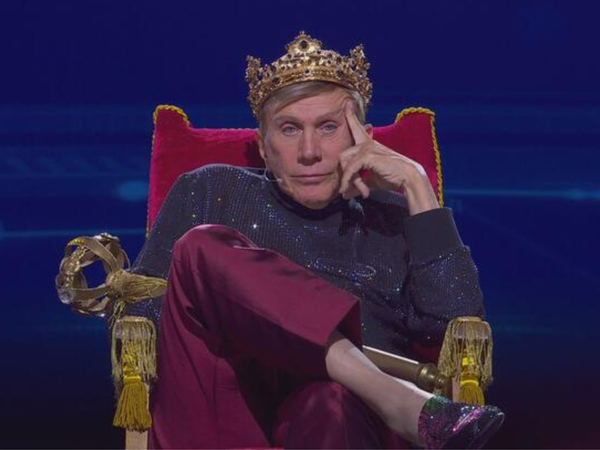
The fate of Joshua Reynolds’s Portrait of Omai, one of the greatest British portraits ever painted and the country’s first grand portrayal of a non-white subject, hangs in the balance. If this astonishing work is lost abroad – as it may well be – once a government-imposed export bar runs out next month, it will leave more than an empty space on the wall of the National Portrait Gallery, which is running a last-ditch fundraising campaign to acquire it.
It will also expose the 70-year-old system intended to save art and cultural objects for the nation as unfit for purpose, able to define “national treasures” but unable or unwilling to fight to keep them here.
The figures speak for themselves. Two out of every three precious objects deemed so historically or aesthetically important that are temporarily banned from leaving the country end up sold overseas anyway, never to return. In 2021-22, the Reviewing Committee on the Export of Works of Art and Objects of Cultural Interest – the independent body of experts that advises the government on national treasures – recommended ministers defer export licences on 16 artefacts up for sale: a mechanism that is supposed to allow a breathing space to raise funds to keep them in Britain.
Of the 15 that ministers opted to place under export bar, however, just three were saved, three are still under deferral – including Portrait of Omai, owned by the Irish businessman John Magnier – and the other nine, including a Cézanne judged “outstanding” by the committee, were or can be exported.
We cannot, of course, save everything. Art acquisition, like politics, is about choices and the aggregate value of the 15 deferred artefacts was a huge £113,829,831 – the third highest total in the last 10 years, albeit inflated by the exceptional £50m price tag on the Reynolds portrait. (That figure, representing a significant profit on the £10.5m Magnier paid for the work in 2001, has been corroborated by independent valuation at the government’s request.)
Arts funding has been slashed, and at a time of enormous economic hardship for many, throwing money at paintings (or, more accurately, their wealthy private owners) can feel insensitive to the point of obscenity. Caution over these views at least partially explains the low-key, almost apologetic, campaign run by the National Portrait Gallery to raise funds for Portrait of Omai, even though its director, Nicholas Cullinan, describes the painting as “amongst the most important acquisitions we, as a nation, could ever make, and will be remembered for generations to come”.
The missing piece in all this, I suggest, is public involvement. Reynolds’s Omai is a work of exceptional beauty and historical importance, shedding light on unknown narratives around Indigenous travellers to Britain, with its portrayal of a young Polynesian man who journeyed here as part of Captain Cook’s second Pacific voyage and became a national celebrity. Yet, until now, just weeks before it could leave Britain forever, almost no one has been aware of its story or its potential loss.

The Art Fund, the leading charity that secures artworks for public museums and galleries, has given its largest ever grant – £2.5m – to try to save the portrait. But ministers have barely spoken up for it, nor have others in the art world who could have given the National Portrait Gallery some cover as it sought donations in hard times. “The government has just been paying lip service,” according to one closely involved individual. “If there is no public outcry they can claim it [the portrait] won’t be missed.”
Britain is not alone in struggling to reconcile the desire of the state to preserve cultural treasures for public view with the power of the international art market. The Netherlands has recently produced new criteria for protected goods and established a national export licence system after losing a multimillion-euro drawing by Peter Paul Rubens, sold at auction by a Dutch princess.
In Italy, any culturally significant artwork that is at least 70 years old, created by a deceased artist and worth more than €13,500 now requires an export licence to leave the country, and – if designated as of national importance – may be blocked from departure and sold only to Italian residents or institutions, a policy some regard as too sweeping. The French government, too, is ready vigorously to block export, while its use of generous tax breaks makes British gallery heads green with envy. Just last month, the luxury goods conglomerate LVMH shelled out €43m to acquire Gustave Caillebotte’s impressionist painting Boating Party for the Musée d’Orsay and received a tax break of 90% of the purchase price, prompting criticism that the real donors were French taxpayers.
The National Portrait Gallery’s plan for Portrait of Omai, if it can save it, is a starring role in its refurbished galleries, reopening in June, and then a five-year programme in which it will go on loan to galleries around Britain, with a special focus on educational visits for children. Rightly, the aim is to ensure a work should be as accessible as possible to all, in perpetuity. But just as there should be public access, so there should be a public voice in deciding what to save, especially in straitened times.
Instead of delivering their report and falling silent, experts on the Reviewing Committee should advocate for key works, drawing together coalitions of interest and arguing their case loudly and in public. We should hear more about export-barred objects with more time left to act: through the media, in parliament, from galleries and museums hoping to acquire them. A Dragons’ Den-style televised national treasure-off might be a step too far (although I’d watch it), but more noise, more explanation of the stories of at-risk artefacts and why they matter must be better than silence.
Omai may yet vanish, partly because no one stood up early enough and fought for it. We need, and deserve, a more informed debate about what national treasures really mean to us and how far we will go to save them.
• The fundraiser to keep Joshua Reynold’s Portait of Omai in the UK can be found on the Art Fund website. Lucy Ward’s book The Empress and the English Doctor is published in paperback on Thursday 16 February







